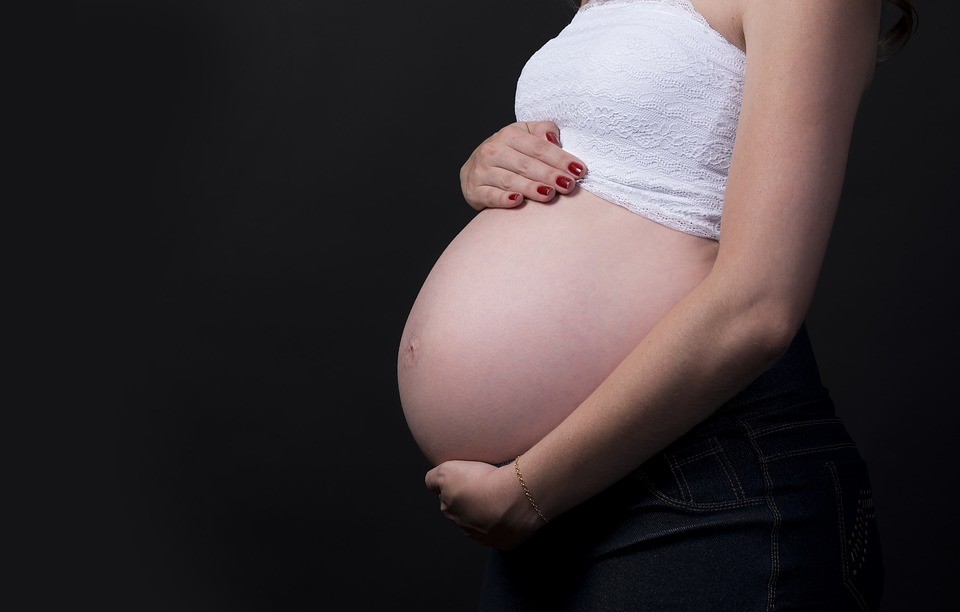Archaic medical practices are still the norm

Pregnancy is the miracle of life, childbirth is what nightmares are made of.
Every day, technology seems to be taking leaps and bounds. Our phones send messages across the earth in seconds. Our cars can take us amazing distances on electric power. We have artificial intelligence that bears an unbelievable resemblance to humans. And yet, something we have yet to conquer is the fact that women are expected to pop a watermelon-sized human out of their body like it’s no big deal.
Childbirth as we know today is painful and damaging to women, especially as it is practiced in the United States. If surgeries can be developed to replace human hearts and pills can be made to help men fight erectile dysfunction, there has to be a better way for women to give birth that doesn’t involve immense pain and lifelong damage.
Pain
The stereotype of pregnancy being one of the most painful experiences in a woman’s life seems to hold up. According to American Scientist, 41 percent of mothers surveyed said that childbirth was the worst pain they had ever experienced, another 28 percent said it was an extremely painful experience and only 4 percent said the pain was a positive experience.
Both psychological and physical factors can play into pain during childbirth. On average, childbirth takes nine hours for a mother’s first child. This is a well-known fact and the length of labor plays into how difficult the experience is. Most mothers go into the child birthing process with a series of horror stories under their belt.
A lot of this pain could easily be eliminated by changing medical practices. According to the National Center for Biotechnology Information, laying on your back, as women do when they give birth in hospitals in the U.S., compared to positions such as squatting, closes the pelvis by up to 30 percent. This makes labor much more painful and lengthy. Not to mention that women who are aware of what to expect during labor and the actual risks present during labor tend to be better prepared and more able to withstand a lengthy child birthing experience.
Damage
More concerning than the pain most women go through, and it is concerning, is the life-long damage caused by childbirth. Several statistics from the National Center for Healthcare Statistics are cause for alarm. While the death-rate for childbirth has gone down from one in one-hundred in the early 1800s to one in four-thousand, there are other physical traumas besides death that women must bear.
Somewhere between 50 and 80 percent of women experience tearing of the vaginal skin and muscle. If that makes you cringe, it should. More than this, one in ten women have this tearing to the point where their anal sphincter is permanently damaged, leading to bladder and bowel incontinence. Basically, childbirth tears some women so bad that they experience bladder leakages or bowel leakages for the rest of their lives.
One year after pregnancy, over half of women have urinary incontinence and over three-fourths of women have residual back pain. Pelvic organ prolapse, where the bladder sags causing extreme pain and discomfort and pelvic floor disorders are also extremely common.
All of this is disturbing for many reasons, mainly, women are living lives of quiet humiliation due to conditions we consider normal due to childbirth. The cost of these damages is not just psychological. Nursing home admissions for urinary incontinence cost tax-payers six billion dollars in 2010, imagine the figure now.
Statistics and figures are one thing, but NDSU student Hannah Hirt discussed her own mother’s experience with childbirth. During the childbirth of Hirt’s oldest brother, her mother completely lost feeling in her left leg and has never regained feeling since. During the childbirth of Hirt’s older sister, her mother was bruised so badly as doctors tried to align her sister correctly in the womb that Hirt’s mother’s stomach was black with bruises. This painful method is called external cephalic version (ECV) and involves doctors physically maneuvering a mother’s stomach by pressing firmly. In Hirt’s mother’s case, the ECV led her to heavy tears.
The experience of Hirt’s mother sounds awful, but it was Hannah’s own childbirth that was the most traumatizing. “I was stillborn,” explained Hirt, “I had suffocated in the womb and they didn’t know it.” Hirt described how she had turned black from lack of oxygen, “The doctor saw the color of my skin and he just took a knife and cut in every direction of my mom’s princess parts to rip me out of her. She had to be very stitched up after that.” To this day, Hirt’s mother has to wear what is effectively a diaper because of the damage from her daughter’s birth some twenty years prior.
Concern
So what’s all this to you? Most college students are in their late teens and early twenties, for the most part, they don’t have pregnancy on the brain. Maybe it’s time that they did.
Most NDSU students will someday be parents. While they may find alternative means, such as adoption or foster care, to have children, many will not. As NDSU graduates move on with their lives into their professions and family lives, the likelihood of encountering childbirth, either personally or with a partner, is high.
Personally, I have little interest in wearing a diaper for the rest of my life, I’d think most people would agree. Labor, as performed in the U.S., is archaic, painful and extremely harmful to the mother. It seems that the lifelong effects of childbirth are just meant to be held by a mother in determined silence.
Even if you personally never can or plan to get pregnant, the tax cost alone to support women with painful or embarrassing conditions as a result of childbirth should be incentive enough to encourage alternative methods.
If labor doesn’t get easier for women, I know I sure as hell won’t be having babies any time soon.
